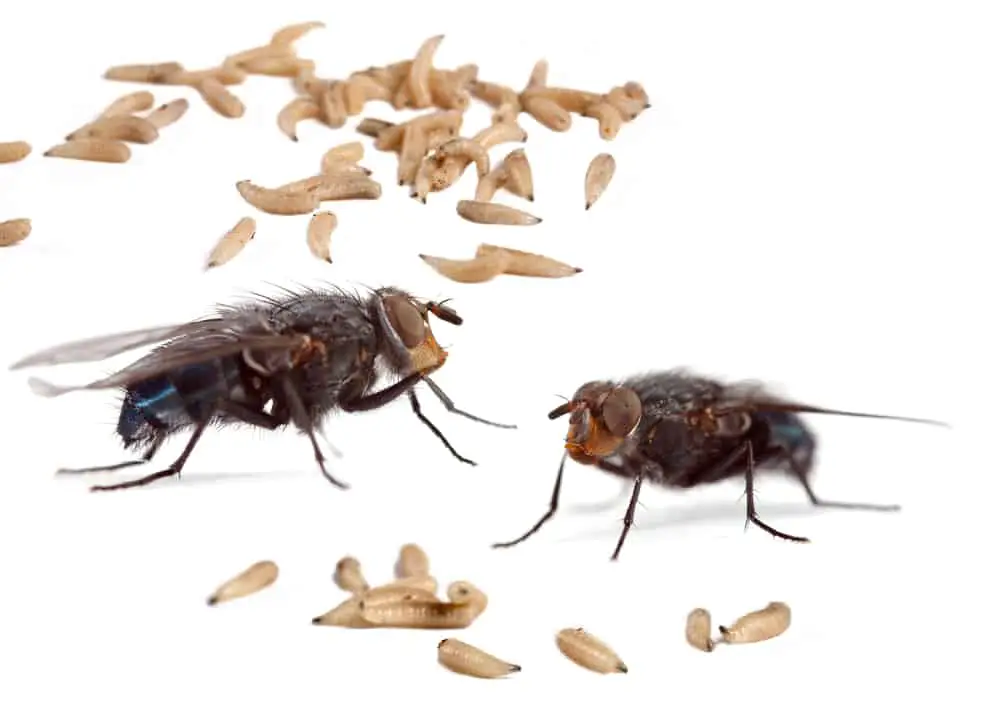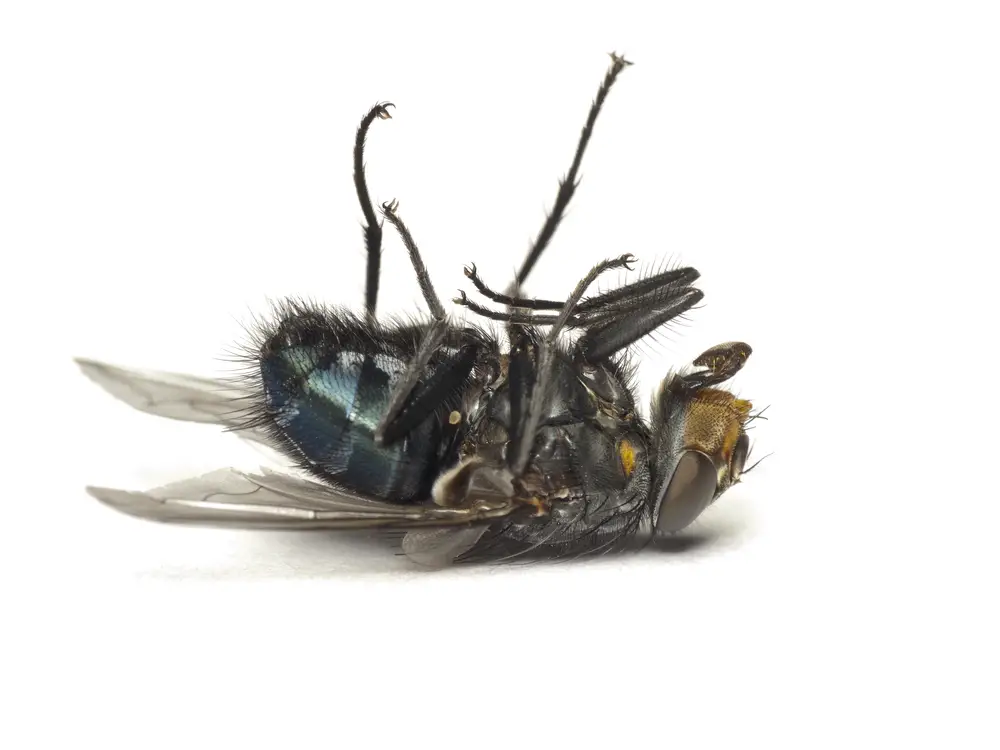When it comes to controlling a fly infestation in your home or garden, understanding the temperature threshold that can potentially eliminate these pesky insects is essential
Flies, like all other living creatures, have a specific range of temperatures where they can thrive.
Quick Answer:
Flies can be killed by extreme temperatures. While their activity peaks between 70°F and 80°F, temperatures above 120°F or below freezing can cause dehydration, thermal stress, or death. It’s important to note that temperature tolerance varies among fly species.
A variety of fly species exist, and each may have slightly different temperature tolerances.
Impact of Temperature on Fly Survival
Flies, like many insects, are ectothermic or cold-blooded creatures. This means that their body temperature is heavily influenced by the surrounding environment. As a result, temperature plays a critical role in their survival.
Cold Temperatures
When temperatures drop, flies generally become less active. Prolonged exposure to cold temperatures can lead to a state called diapause, a form of hibernation where metabolic activities slow down, enabling flies to survive through tough conditions.
However, if the temperatures fall below the fly’s chill-coma threshold, they become immobile and may eventually die.
- House flies: Chill-coma temperatures for house flies are around 41°F (5°C), and they can’t remain active below 50°F (10°C).
- Fruit flies: Fruit flies have a slightly higher chill-coma threshold of approximately 50°F (10°C) and will be unable to continue their normal activities below this point.
Warm Temperatures
On the other hand, warm temperatures generally provide a more ideal environment for flies to thrive. As the temperature rises, their metabolism and activity levels increase, resulting in a higher chance of survival, reproduction, and feeding.
However, extreme heat can also be detrimental to flies. Exposure to temperatures above their thermal tolerance limits can lead to heat stress, resulting in reduced activity, malfunctioning flight, and, in extreme cases, death.
- House flies: Those flies can tolerate temperatures of up to 113°F (45°C) but may experience heat stress at temperatures above 95°F (35°C).
- Fruit flies: Fruit flies have lower thermal tolerance limits compared to house flies, usually around 86°F (30°C), and will experience heat stress when exposed to temperatures higher than this.
Temperature Influence on Flies’ Life Cycle

Eggs
Temperature plays a crucial role in the life cycle of flies, beginning with their eggs. Flies typically lay their eggs in warm, moist environments, which are ideal for rapid development.
The optimal temperature for fly egg incubation is between 80.6°F – 86°F. At this temperature range, the eggs will hatch within 8 to 20 hours. However, if the temperature falls below 68°F, the hatching process might be considerably delayed or might not occur at all.
Larvae and Maggots
Fly larvae, commonly known as maggots, also depend on temperature for their growth and development. The ideal temperature range for maggot development is around 80.6°F – 89.6°F.
Under these conditions, maggots go through three instar stages, each lasting about 24 hours. Cooler temperatures can slow down this process, while temperatures below 60.8°F might result in larval death.
Pupae
The pupal stage, where the maggots transform into adult flies, is also influenced by temperature. The optimal temperature for pupation is approximately 80.6°F – 86°F.
At this range, the pupal stage lasts between 3 and 7 days. Colder temperatures may prolong the pupal stage or potentially cause the pupae to die off.
Adult Flies
Once emerged, adult flies are also affected by temperature. They are most active at temperatures between 62.6°F – 95°F, with their peak activity occurring around 77°F.
Extreme temperatures, either too cold or too hot, can cause adult flies to become lethargic or die. For example, temperatures above 109.4°F can be lethal for adult flies.
Handling Fly Infestations
Indoor Control Strategies
To effectively control house flies, fruit flies, and drain flies indoors, a combination of cleanliness and trapping methods should be employed:
- Cleanliness: Regularly remove potential breeding sources like garbage, leftover food, and wet clothes. Keep your kitchen and bathroom surfaces clean to prevent flies from finding a breeding spot.
- Traps: Use a variety of fly traps, such as sticky strips, insect zappers, and homemade fruit fly traps (using containers with vinegar, wine, or fruit as bait).
Outdoor Management Techniques
For an outdoor infestation, it’s crucial to implement the following management techniques:
- Control breeding sites: Regularly clean and maintain your outdoor areas, including trash cans, pet waste, and gutters. Any standing water should be removed to prevent flies from breeding.
- Barriers: Install fly screens on windows and doors to prevent flies from entering your home.
- Natural predators: Encourage birds and other insects like dragonflies to your garden, as they can help control the fly population.
Using Temperature to Repel Flies
Cold Weather Tips
Flies are cold-blooded insects and generally prefer warmer temperatures. When the temperature drops, their activity slows down, making it easier to repel them. To take advantage of cold temperatures during cold weather, try the following tips:
- Seal any gaps or cracks in your home to prevent cold drafts and keep flies out.
- Lower the thermostat to make your home less inviting for flies. However, this should be done with consideration for your comfort as well.
Hot Weather Tips
In hot weather, flies become more active and may seek cooler environments. While they can tolerate heat to some extent, using high temperatures can help discourage them.
Here are some useful hot weather tips:
- Use fans to create air movement and make it difficult for flies to land.
- Install air conditioning units in your home to maintain a comfortable temperature and force flies to look for cooler places elsewhere.
Natural Fly Repellents
Herbs and Flowers
Growing specific herbs and flowers in your garden can help repel flies. Lavender, eucalyptus, peppermint, and lemongrass are some popular choices. These plants emit strong smells that flies dislike, keeping them away from your space. Plant them near outdoor seating areas or entryways to maximize their effectiveness.
Homemade Traps
Homemade traps are an effective and affordable way to keep flies away. One of the most common methods involves using apple cider vinegar and dish soap.
To make this trap:
- Fill a small container with apple cider vinegar
- Add a drop or two of dish soap
- Stir gently to combine
The vinegar’s scent attracts flies, while the soap breaks the surface tension, trapping and drowning them. Another simple trap can be made with sugar, water, and vinegar:
- Mix equal parts sugar and water in a container
- Add a small amount of vinegar (this will keep bees and other pollinators away)
- Place pieces of fruit or bread as bait
- Cover the container with plastic wrap, and poke small holes for flies to enter
Other Natural Remedies
Cayenne pepper is an effective natural repellent due to its strong smell. Sprinkle it near entryways and windows to deter flies. You can also create a repellent spray by mixing cayenne pepper with water and applying it around your home.
Cinnamon is another natural remedy, particularly useful against fungus gnats. Sprinkle it on the soil of potted plants to keep these pests away. In addition to acting as a repellent, cinnamon also has antifungal properties that help prevent the growth of mold and mildew in damp areas.
Common Fly Species and Preferences

Houseflies
Houseflies (Musca domestica) are one of the most common fly species found in various environments. They prefer warmer temperatures, with their ideal temperature range being 68-86°F.
Houseflies are ectothermic, meaning that their body temperature is determined by their environment. They may become sluggish or even die in colder temperatures, typically below 50°F.
Fruit Flies
Fruit flies (Drosophila melanogaster) are another prevalent fly species. They are often found near decaying fruits and vegetables. These flies thrive in warmer temperatures, generally between 71.6-84.2°F.
Like houseflies, fruit flies may become inactive or die in colder temperatures, particularly below 54°F.
Gnats
Gnats are a diverse group of small fly species, including fungus gnats (Sciaridae), black gnats (Simuliidae), and no-see-ums (Ceratopogonidae). Although their preferences may vary slightly between species, most gnats are suited to warm, humid environments.
Fungus gnats and black gnats tend to prefer temperatures of around 70-75°F, while no-see-ums can tolerate somewhat higher temperatures up to 86°F.
In colder temperatures or when exposed to extreme heat, the survival chances for flies decrease significantly. However, flies can adapt to a certain extent, but it is generally safe to say that temperatures below 50°F and above 100°F are not ideal for these fly species.


